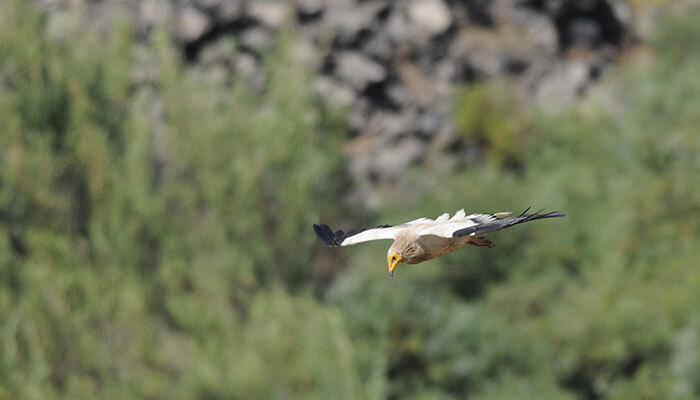Egyptian Vulture

This website uses cookies to ensure you get the best experience on our website.
×
There is only one pair of these birds on the Island at the moment and they reside in the mountain range of the Arta Peninsula. As they breed on the neighbouring islands they are often seen over the Boquer Valley and the Cuber Reservoir on migration. This year they have been seen at the Can Curassa and last year there is a view they may have bred close to the Boquer.
Egyptian Vulture (Neophron percnopterus), also called the white scavenger vulture or pharaoh’s chicken, is a small Old World vulture and the only member of the genus Neophron. It is widely distributed and is found from southwestern Europe and northern Africa to India. The contrasting underwing pattern and wedge-shaped tail make it distinctive in flight as it soars in thermals during the warmer parts of the day. Egyptian vultures feed mainly on carrion but are opportunistic and will prey on small mammals, birds and reptiles. They also feed on the eggs of other birds, breaking larger ones by tossing a large pebble onto them. The Egyptian vulture is usually seen singly or in pairs, soaring in thermals along with other scavengers and birds of prey, or perched on the ground or atop a building. The adult’s plumage is white, with black flight feathers in the wings. The bill is slender and long and the tip of the upper mandible is hooked. The nostril is an elongated horizontal slit. The neck feathers are long and form a hackle. The wings are pointed, with the third primary being the longest; the tail is wedge shaped. The legs are pink in adults and grey in juveniles. The claws are long and straight and the third and fourth toes are slightly webbed at the base. The adult Egyptian vulture measures 47–65 centimetres (19–26 in) from the point of the beak to the extremity of the tail feathers. The wingspan is about 2.7 times the body length.